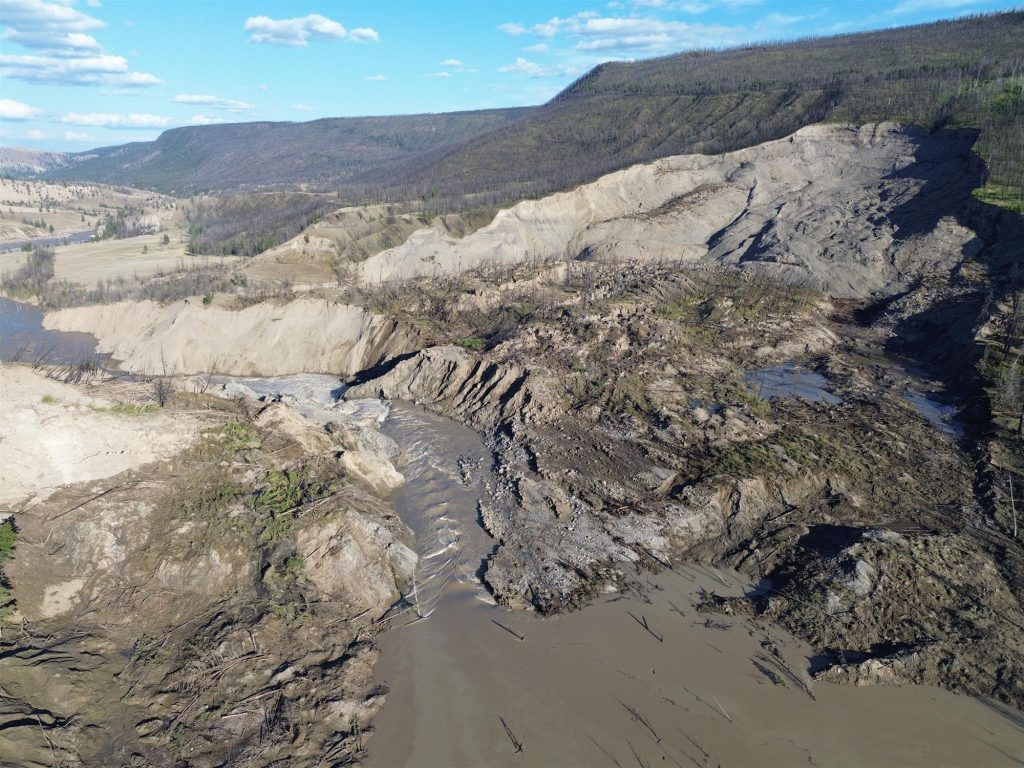B.C. ministry monitors after-effects of Chilcotin landslide

Posted August 8, 2024 4:56 pm.
Last Updated August 8, 2024 4:57 pm.
The B.C. government says it’s now taking a closer look at the aftermath of the Chilcotin River landslide, after the risk of a worst-case flooding scenario drastically decreased this week.
Connie Chapman, the executive director of water management with the Ministry of Water, Land, and Resource Stewardship, says the ministry will continue to monitor as flows over the landslide reach “precondition” levels.
Chapman says all flows that the ministry was gauging have now returned to normal, but she anticipates that suspended sediment will continue down the river.
“So overall, the pulse of water has made its way completely through the system now. And what we will continue to see specifically on the Chilcotin is a little bit of increased sediment load, but the main bulk of all the debris has made its way through the entire system, starting from the slide at the Chilcotin all the way down to the mouth of the Fraser, where it meets the ocean.”
She says it’s hard to calculate how much was captured in the Fraser River Debris Trap.
“We are kind of working within an estimate range, and that estimate is around 60,000 cubic metres of debris. The debris trap was able to capture just around half, if not a little bit more than half, of what we saw come down the system,” said Chapman.
Minister of Water, Land, and Resource Stewardship Nathan Cullen says he’s now turning towards recovery.
Cullen says the ministry’s primary concern is the salmon populations in the two rivers. He says work is underway with the help of the federal Department of Fisheries and Oceans, local First Nations, and the Upper Fraser Fisheries Conservation Alliance.
“Immediate focus now is on assessing fish passage across the Chilcotin slide site, monitoring the salmon stocks, particularly the sockeye, as they come into the system, and assessing the Chilcotin and Fraser River banks to ensure that any additional slumping and sloughing does not create a new challenge for these salmon,” said Cullen.
“Slope stability remains a concern, both above and below the slide site. In closing, this experience was a clear reminder that no order of government can address these types of massive incidents on their own. The cooperation that we’ve seen over the past week was just outstanding.”
He says that with so much material from the landslide yet to be moved, the fish may have a hard time making their way upstream. Cullen says the ministry is keeping an eye on one “bottleneck” where “significant water is going through a very small area that seems to be eroding,” but salmon might not yet be able to pass.
“But Mother Nature and salmon are incredibly resilient. It may resolve itself as the water gets cleaner, as that blockage starts to diminish. And salmon, being so determined and strong, may themselves find the passage up. If that proves not to be the case, we are now working with First Nations partners and preparing essentially a Plan B,” said Cullen.
Cullen says the debris that was deposited and settled along the river banks will likely remain there until another high-water event, which he says will likely be next year’s spring melting season.








